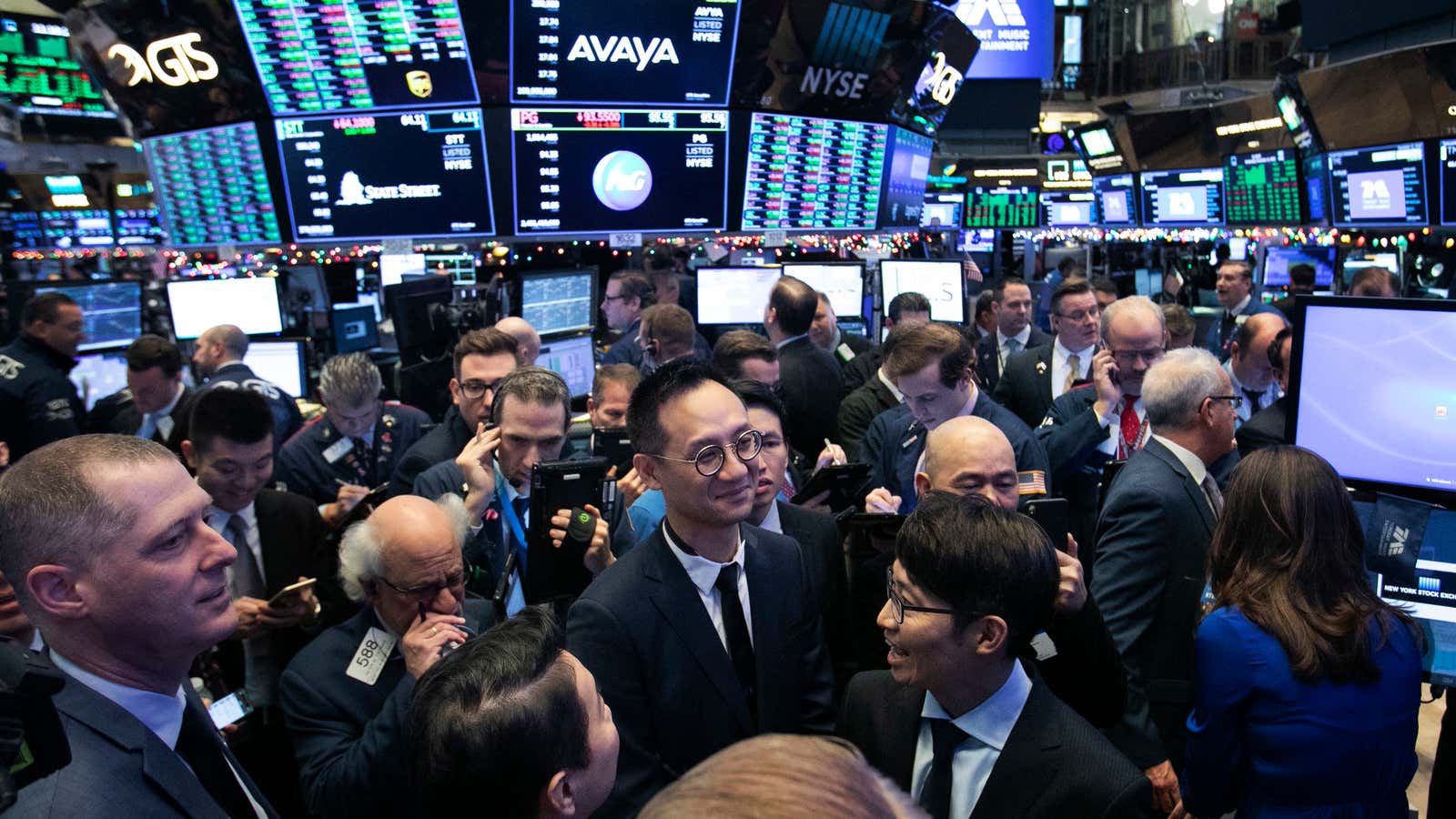US Treasury secretary Steve Mnuchin announced this weekend that he would be convening the President’s Working Group on Financial Markets for a call today (Dec. 24) to discuss the volatility that has plagued markets in recent weeks.
The official line on the working group is almost staggeringly unsexy: it’s a Reagan-era initiative connecting Wall Street and Washington to work on issues affecting the market.
For three decades, however, this group of senior federal and NYSE officials has been plagued by confusion, conspiracy theories, and general misinformation. They’re often referred to by a far more glamorous name, coined by the Washington Post in 1997: The Plunge Protection Team.
Officially, what is the President’s Working Group on Financial Markets, what do they do, and who are they?
According to Executive Order 12631, signed in March 1988, the Working Group was created to perform three clear jobs.
- They would “identify and consider” what had caused the 1987 financial crash, and work out which actions needed to be carried out.
- They would “consult, as appropriate, with representatives of various exchanges, clearinghouses” on behalf of the government to figure out what the private sector could do to help.
- They would report back to the president within 60 days, “and periodically thereafter.”
The committee is chaired by the Treasury secretary, and includes the Federal Reserve chair and the heads of the Securities & Exchange Commission and Commodity Futures Trading Commission, or their designees.
Conspiracy theories of the PWGFM
Because the exact workings of the committee has often been kept under wraps, conspiracy theories about exactly what they do have proliferated. Some believe they secretly buy up “S&P futures in an effort to put a floor under the market,” while others are convinced that they report only to the President, and keep no records of their shadowy trading history with big banks. (While they do necessarily interact with the President, there’s no evidence of any such trading history, or of their meddling in S&P futures.)
In practice, the group is spurred into motion on occasions where market activity tips from volatile into perilous. In 2008, for instance, they released a statement explaining that they were “working with market participants and regulators globally to address the current challenges and restore confidence and stability to financial markets around the world.” They would be “strengthening the balance sheets of financial intermediaries and improving overall market functioning,” they said. When the precise mechanics of how they did so were not revealed, rumors that they had gone far beyond their original mandate began to swirl.
A surprisingly large number of analysts and investors have thus expressed concerns over the years that the group might be rigging the stock market. In 2009, a sudden surge in stock prices, suggesting an injection of money, seemed to come out of nowhere—and not from traditional players such as companies, retail or foreign investors or pension or hedge funds. At the same time, phone records obtained by the New York Post showed numerous calls between Treasury secretary Hank Paulson and Wall Street top dogs. But the jury’s out on whether either of these is actually so suspicious. You’d expect the Treasury secretary to be in touch with banks and NYSE officials. Stocks “suddenly” coming back to life may have been little more than risk-averse investors finally responding to more positive news from companies.
On other occasions, the lack of a stock-market collapse in the wake of obvious threats to market stability have led investors to suggest government intervention, including following the 2001 attack on the Twin Towers or after US president Donald Trump was elected. (Before his victory, the consensus among Wall Street oddsmakers was that Hillary Clinton’s loss would lead to stock market tumbles—instead, the market rallied to surprising effect.)
Others suggest the group is essentially toothless. Brendan Greeley, writing for the Financial Times (paywall), dismissed the present-day working group as little more than “a way for a president to say HELLO AMERICA I AM DOING A THING.” With the Financial Stability Oversight Council officially taking many of the group’s former responsibilities since 2010, “Mr Mnuchin could just as easily call on the order of the garter to take up arms and defend the realm. He’s throwing glitter on a football.”
Inside the war room
Whatever the Plunge Protection team is up to, as the Washington Post reports, “these quiet meetings of the Working Group are the financial world’s equivalent of the war room.” Officials run through crisis scenarios, and how they might approach them; consider the best governmental course of action to a stock market collapse; and work out what to do when investor confidence falls through the floor.
Most of all, they want to make sure that in the event of a major crisis, markets would keep on operating—and investors wouldn’t simultaneously head for the hills. “Officials worry that if investors all tried to head for the exit at the same time, there wouldn’t be enough room—or in financial terms, liquidity—for them all to get through,” the Post explains. “In that event, the smoothly running global financial machine would begin to lock up.”
Today’s “plunge protection team” meeting takes place after a weekend of calls by Mnuchin to CEOs of six of the country’s largest banks, apparently to reassure jittery financial markets. This unusual move (paywall) comes as investors agonize over U.S.-China trade tensions, the US government shutdown, and an international slowdown in the global economy. Whether a “miraculous” recovery will follow remains to be seen.
